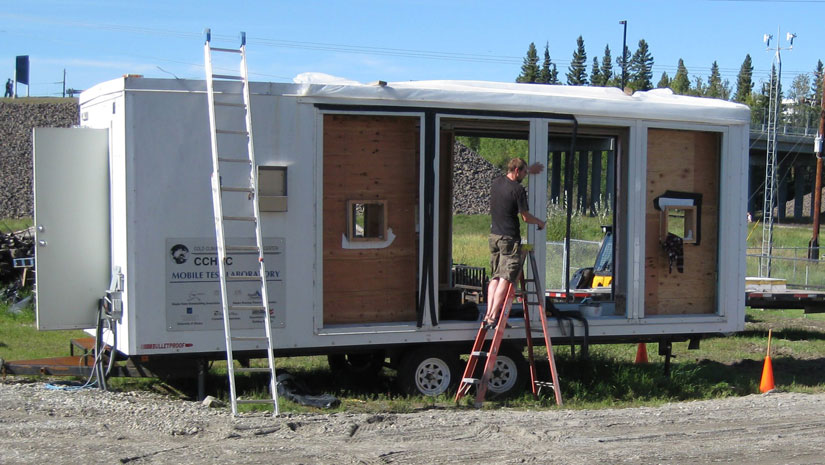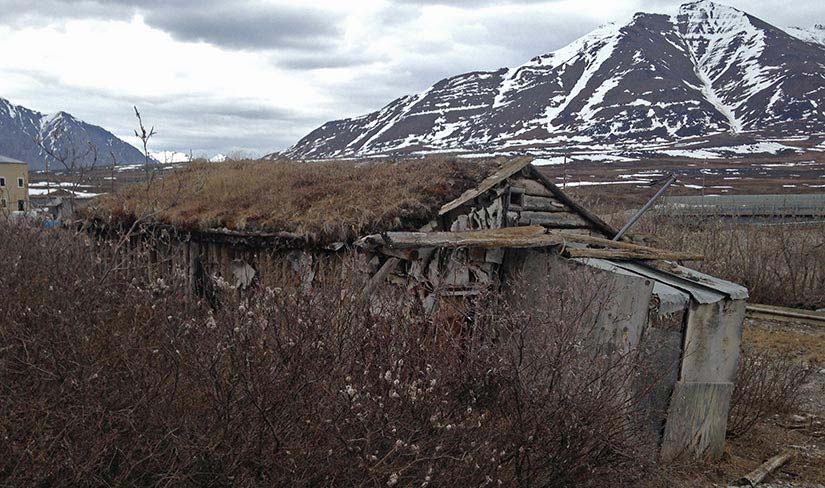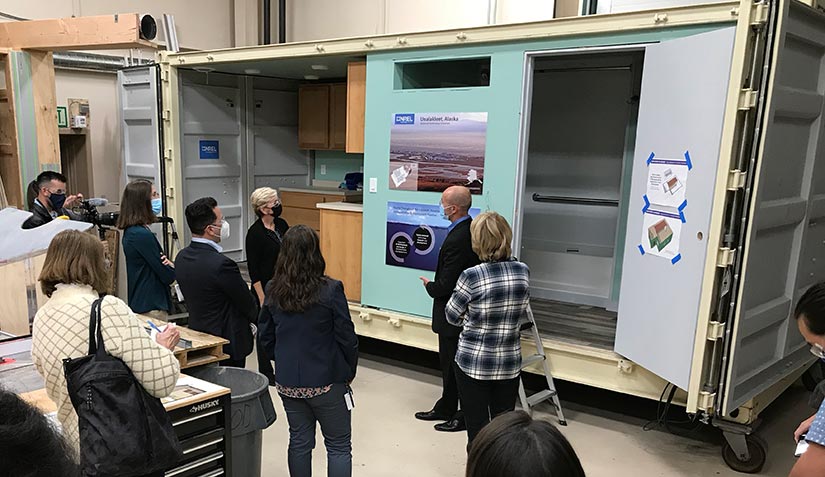Resilient Buildings
Through NREL's Alaska Campus in Fairbanks, researchers partner with communities and tribes to co-create sustainable, resilient buildings that thrive in the local environment, whether it's the Arctic tundra or the tropics.
At the heart of this work is listening to communities to ensure technology reflects their culture, knowledge, and needs. The modern building stock in Alaska was not designed for the climate, resulting in high energy costs, structural failures, and widespread health impacts for Alaskans. Learning from the past, NREL's approach is to let the community drive the process, while providing technical assistance and expertise to ensure technologies are durable, sustainable, and equitable.
Building Science Research
Developing resilient communities starts in the lab, where our researchers evaluate foundations, building envelopes, and heating systems that can withstand extreme climates while reflecting the tastes and cultures of families. One of the greatest challenges is developing walls that are both energy-efficient and moisture-safe. NREL's Alaska Campus is continually innovating to create the most high-performance, cost-effective wall systems using the latest materials and technologies. For projects in remote and rural communities, building assemblies also need to be simple, durable, and easy to ship and construct without heavy equipment.

Social and Economic Analysis
Designing resilient buildings would be impossible without a robust understanding of economics. NREL researchers analyze which technologies pencil out for which communities and how policies and programs can fill in the gaps to accelerate the adoption of energy efficiency and clean energy.
Design
NREL's Alaska Campus designers take the lessons learned from building scientists and economists to develop climate-appropriate homes and buildings for families, tribes, businesses, and communities. These demonstration homes incorporate experimental building and energy technologies aimed at proving out and de-risking new techniques. They also incorporate workforce training and regional economic opportunities to stimulate housing as an engine for growth. Local residents and stakeholders are included to ensure the designs stay true to the culture, environment, and resources of individual communities. NREL's Alaska researchers have designed more than 20 such demonstration homes across Alaska. Two examples are provided below.
Anaktuvuk Pass
In 2009, the Cold Climate Housing Research Center (which joined NREL in 2020) built its first demonstration home in the Inupiaq village of Anaktuvuk Pass. Designers started with a community charrette to learn about traditional housing in the region. The Nunamuit Eskimo of Anaktuvuk Pass were the last nomadic community in North America. Until the 1970s, they lived in semi-underground shelters carved into the hillsides and insulated with thick layers of sod. Surviving in this Arctic environment for thousands of years, the Native people were experts at building cold-climate shelters that were resilient to cold, wind, moisture, and animals.

Researchers worked hand in hand with the community to design a demonstration home blending traditional knowledge and 21st century technology. The home had a thick building envelope filled with polyurethane insulation, a sod roof, and earth-berming on three sides, inspired by the old igloos of the region that were semi-underground. Because there are few jobs in rural Alaska, the project prioritized local workforce development. Students from the region learned on-the-job carpentry skills and earned credit through the regional college. The home incorporated traditional design elements as well as a floating raft foundation, healthy indoor air quality, affordable water and wastewater systems, solar PV, and wind power. Researchers monitored these systems to learn how they performed in the harsh climate and collected feedback from residents. These lessons have been applied in homes across Alaska, each building on new technologies that reflect the culture, environment, and resources of local communities.

Unalakleet
In Unalakleet, a village on Alaska's Arctic coast, researchers worked with the community to design a home that combined prefabricated technologies with site-built construction to create as many local jobs as possible. Like many villages in the Arctic, housing in Unalakleet is expensive, overcrowded, and unhealthy. Residents pay three times more than the national average for heating. The high cost of construction has led to a major housing shortage, causing many elders and young families to leave the village. The tribal leadership needed a housing solution that would reduce energy burdens and preserve the community and its traditional knowledge.
In 2021, NREL worked with the tribe to design a semi-modular home that was built partly in the lab and partly in the community. The most complicated and expensive parts of the home—the kitchen and bathroom—were constructed in a shipping container in the Fairbanks lab. This container was shipped to Unalakleet, where the community built a home around it. The hybrid approach to construction lowers costs by an estimated 40% while keeping most of the economic impact (three-quarters of new jobs) in the community. It is projected to cut energy costs in half compared to typical housing in the area.

Prefabricating the most expensive portions of a home lowers construction costs while allowing the rest of the home to be built on site.
Community engagement is a critical element of designing resilient buildings. In these examples and dozens of others, NREL researchers include local and Indigenous voices throughout the innovation process to ensure technology is appropriate for the climate, environment, and culture. It is equitable technology in action.
Related Resilient Building Work
University of Alaska Fairbanks sustainable village
Atmautluak integrated truss home
Contact
Share

